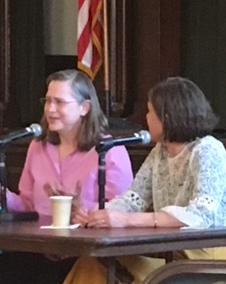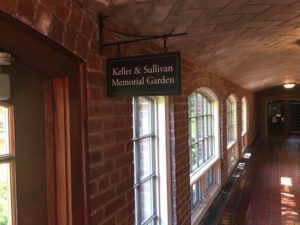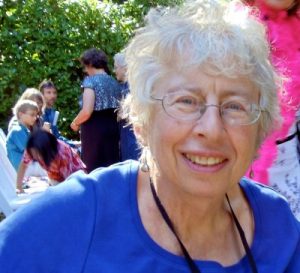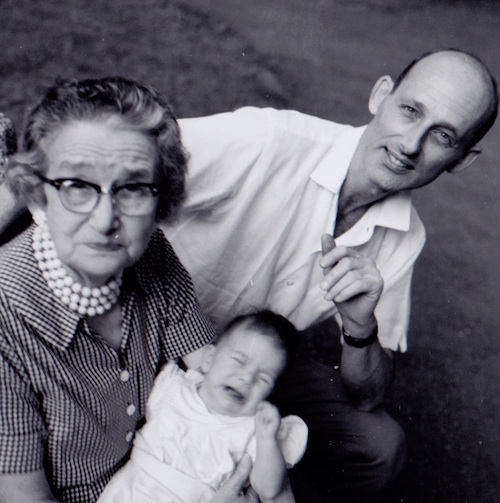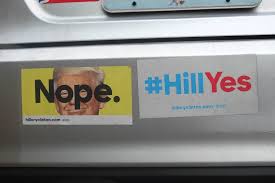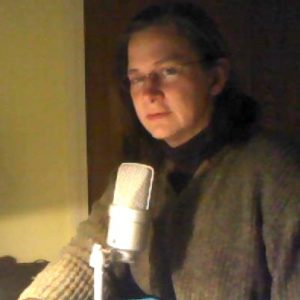Mondays with Mike: We came, we talked, we laughed
May 28, 2018 • 4 Comments • Posted in baseball, Mike Knezovich, Mondays with MikeBeth wrote about our visit to Perkins School for the Blind already—but before Perkins, there was New Hampshire. And after Perkins, there was a visit to Fenway Park (this baseball fan’s first). And after Fenway….
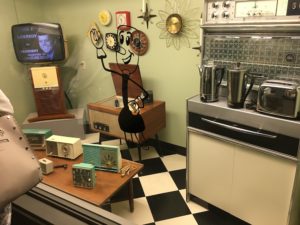
1960s kitsch at the JFK Museum.
A quick recap: It all started with a day and a night in Epping, New Hampshire that included a walk on the beach (yes, New Hampshire has 21 kilometers of shoreline that includes a great sandy beach), playing fetch with Whitney (who took her first saltwater dip), a lobster roll, some shrimp and hours of conversation and laughter with our friends Siobhan and Greg. Then, an overnight stay in an ancient riverside mill converted to apartments, and hours of conversation and laughter with our friends Mim and Kin.
In Boston we made a visit to the JFK Library and Presidential Museum. Beth had visited when she could still see and loved it. This time someone at Perkins arranged for Beth to have her own docent for a tour. I made my own way. The exhibits are terrific—including a set of 1960s era appliances, with black and white TV, aqua blue table radios, and that mid-century modern stuff that’s so popular. I can’t believe mid-century modern is a thing. For me it’s just the junk I grew up with.
It also reminded me of what a great orator JFK was. There was no dumbing down or talking down, the speeches were substantive and superbly written, and it was clear the speaker understood and believed in what he was saying.
And, well, the world was a mess. What new? I recommend visiting—the building itself, an I.M. Pei design, is worth it in itself.

Up close and personal with the Red Sox bullpen pitchers.
That night, we took in a Red Sox-Atlanta Braves game at Fenway Park on a picture perfect summerish evening. We sat right on top of the bullpen, and kids of all ages would come down between innings hoping for an autograph. One 20-something guy came down and kept yelling, “John, c’mon, John, even a nod?” He eventually remembered it was JoeKelly, not John Kelly, who was standing and watching the game. Joe gave him a nod, and the guy walked away in bliss.
It’s the second time I’ve sat near the bullpen (the other at White Sox park)—it’s a blast watching their warm-up rituals. The pop in the catcher’s mitt starts off muted, but then as the warm-up progresses, the volume rises with the velocity of the pitches. And at Fenway Friday night, we heard—for real—the bullpen phone ring.
As for Fenway, I’m glad I made it there. Not just to check it off my “parks visited” list—but just to see, in person, a place I’ve seen on TV most of my life. I still remember watching the Red Sox and Cardinals World Series in 1967. The Red Sox have done a great job using adjacent streets to open up the experience and make it easier than it otherwise would be to navigate. They also seemed to have done a pretty reasonable job (considering the vintage of the building) with accessible seating—something that anyone who uses or has pushed a wheelchair always scopes out, by instinct.
I got the requisite goose bumps walking in—but not because it was Fenway, per se. I get ‘em every time I walk into an MLB park for the first time. They each have their own character, the fans emit their own collective aura—and it’s always great to soak it all up. I’d rank Fenway up there, but PNC in Pittsburgh, AT&T in San Francisco, and Camden yards in Baltimore remain my favorites (after, of course, White Sox park—and the smell of grilled onions every time I walk in).
From there, it was a too-short visit to Alexandria, Virginia, where we… enjoyed hours of conversation and laughter with our friends Pick and Hank.
We sure are lucky.
